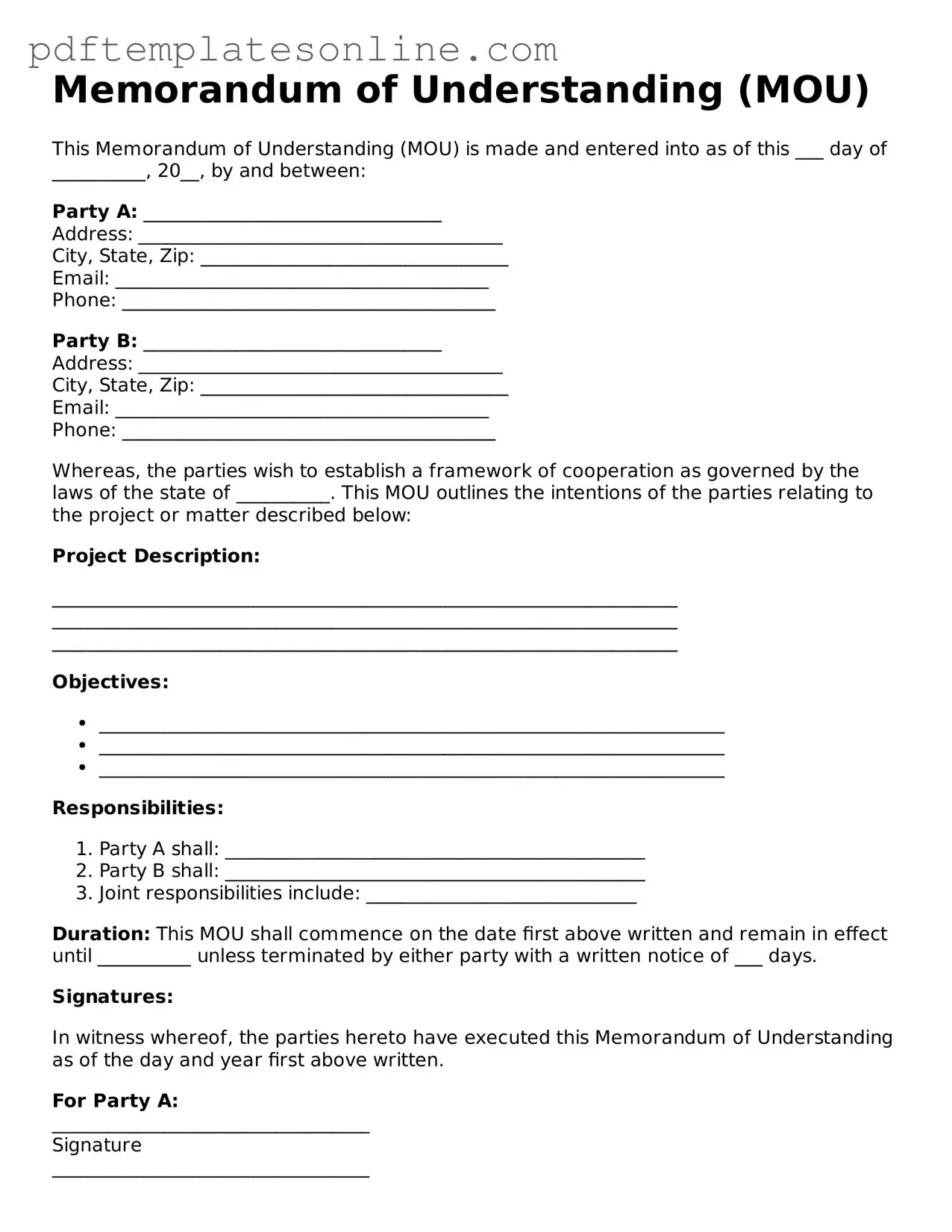Fillable Memorandum of Understanding Document
A Memorandum of Understanding (MOU) is a formal agreement between two or more parties outlining their intentions and expectations. It serves as a framework for cooperation and can clarify roles, responsibilities, and objectives. While not legally binding, an MOU demonstrates a commitment to work together toward a common goal.
Access Memorandum of Understanding Editor Now
